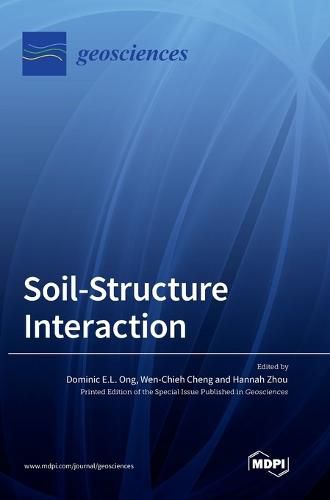Readings Newsletter
Become a Readings Member to make your shopping experience even easier.
Sign in or sign up for free!
You’re not far away from qualifying for FREE standard shipping within Australia
You’ve qualified for FREE standard shipping within Australia
The cart is loading…






This title is printed to order. This book may have been self-published. If so, we cannot guarantee the quality of the content. In the main most books will have gone through the editing process however some may not. We therefore suggest that you be aware of this before ordering this book. If in doubt check either the author or publisher’s details as we are unable to accept any returns unless they are faulty. Please contact us if you have any questions.
It is crucial that scientists and engineers develop their expertise and capability through research and practice to quantify the interaction of infrastructure with the surroundings and the ground upon which they are founded. Therefore, the engineering concept 'soil-structure interaction' forms an integral part of delivering successful project outcomes. As the Lead and Honorary Editor for this Special Issue, Soil-Structure Interaction, I cordially invited the submission of esteemed articles related to recent projects, research, or case studies. These articles detail how geosciences (soil, rock, ground water, geochemistry, geology, hydrogeology, surface run-off, rain, wind, and temperature) directly interact with and impact the performance of human-made structures, buildings, or infrastructure through the following aspects:
i) Underground construction; ii) Innovative ground improvement methods; iii) Geological explorations and interpretation; iv) Instrumentation and field observational method; v) Use of artificial intelligence or algorithms; vi) Forensic engineering or inverse-analysis methods; vii) Geophysical methods for soil or rock characterization; viii) Advancement in laboratory and field testing of geomaterials; ix) Advancement in numerical analysis; x) Advancement in multi-disciplinary design theories, codes of practice, and engineering education.
$9.00 standard shipping within Australia
FREE standard shipping within Australia for orders over $100.00
Express & International shipping calculated at checkout
This title is printed to order. This book may have been self-published. If so, we cannot guarantee the quality of the content. In the main most books will have gone through the editing process however some may not. We therefore suggest that you be aware of this before ordering this book. If in doubt check either the author or publisher’s details as we are unable to accept any returns unless they are faulty. Please contact us if you have any questions.
It is crucial that scientists and engineers develop their expertise and capability through research and practice to quantify the interaction of infrastructure with the surroundings and the ground upon which they are founded. Therefore, the engineering concept 'soil-structure interaction' forms an integral part of delivering successful project outcomes. As the Lead and Honorary Editor for this Special Issue, Soil-Structure Interaction, I cordially invited the submission of esteemed articles related to recent projects, research, or case studies. These articles detail how geosciences (soil, rock, ground water, geochemistry, geology, hydrogeology, surface run-off, rain, wind, and temperature) directly interact with and impact the performance of human-made structures, buildings, or infrastructure through the following aspects:
i) Underground construction; ii) Innovative ground improvement methods; iii) Geological explorations and interpretation; iv) Instrumentation and field observational method; v) Use of artificial intelligence or algorithms; vi) Forensic engineering or inverse-analysis methods; vii) Geophysical methods for soil or rock characterization; viii) Advancement in laboratory and field testing of geomaterials; ix) Advancement in numerical analysis; x) Advancement in multi-disciplinary design theories, codes of practice, and engineering education.